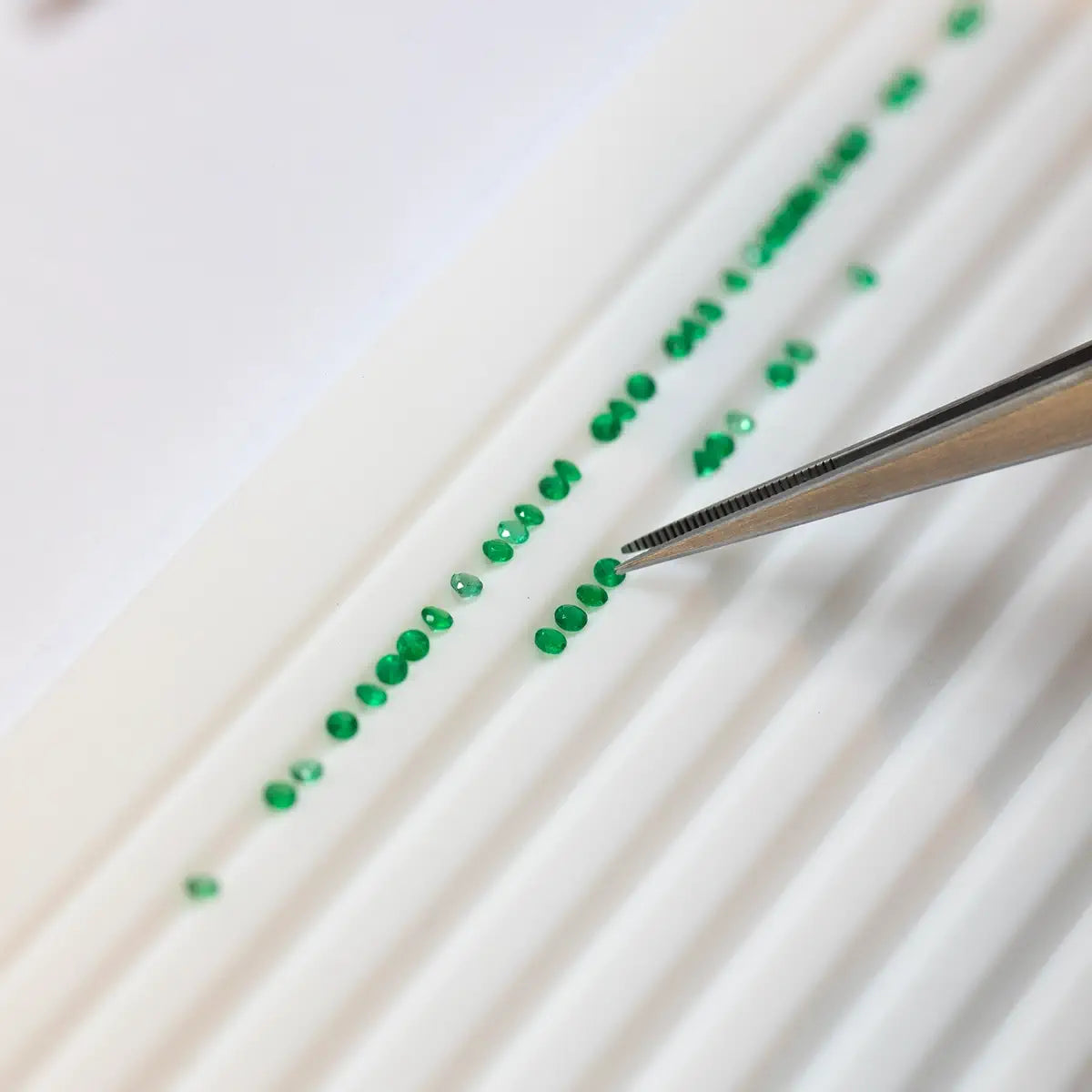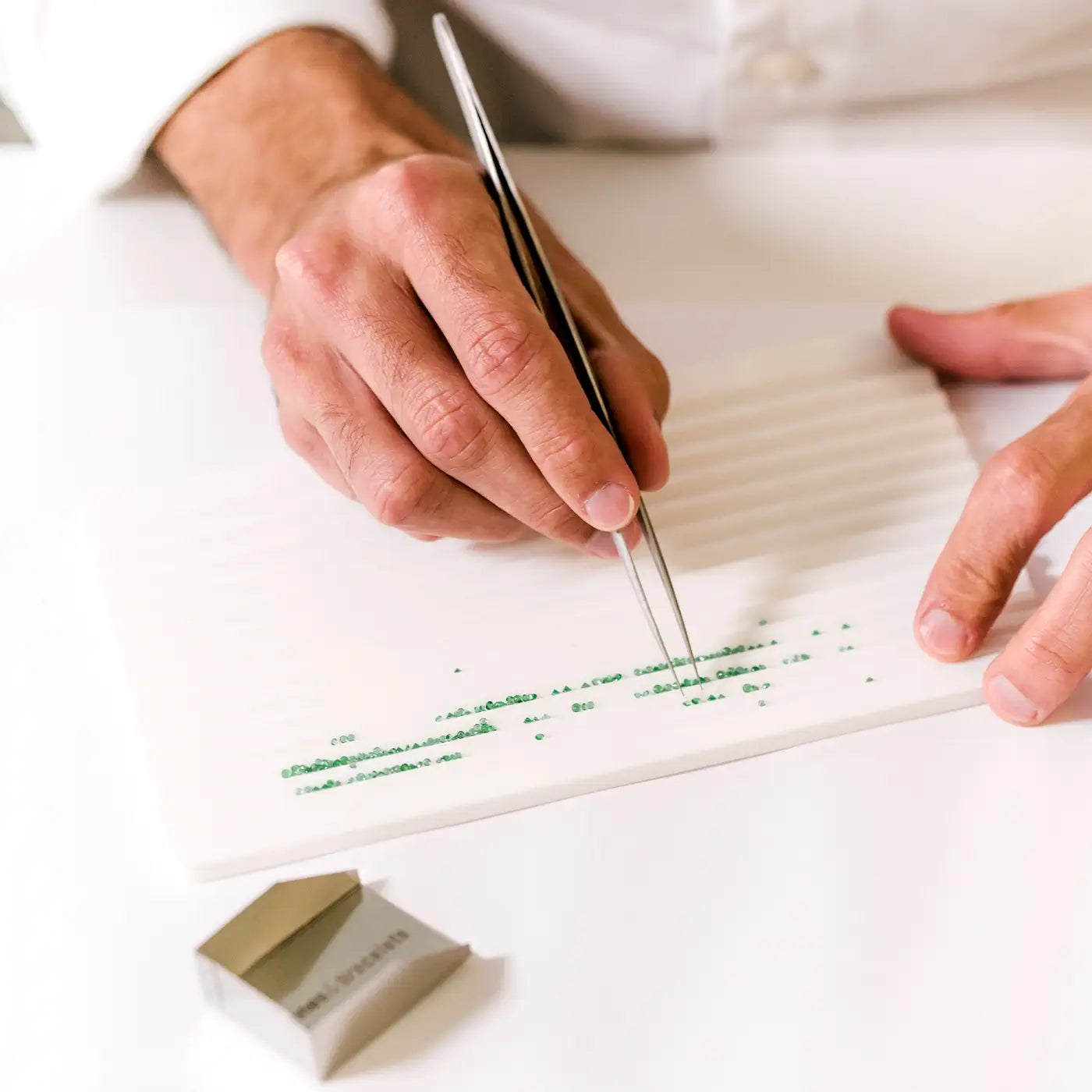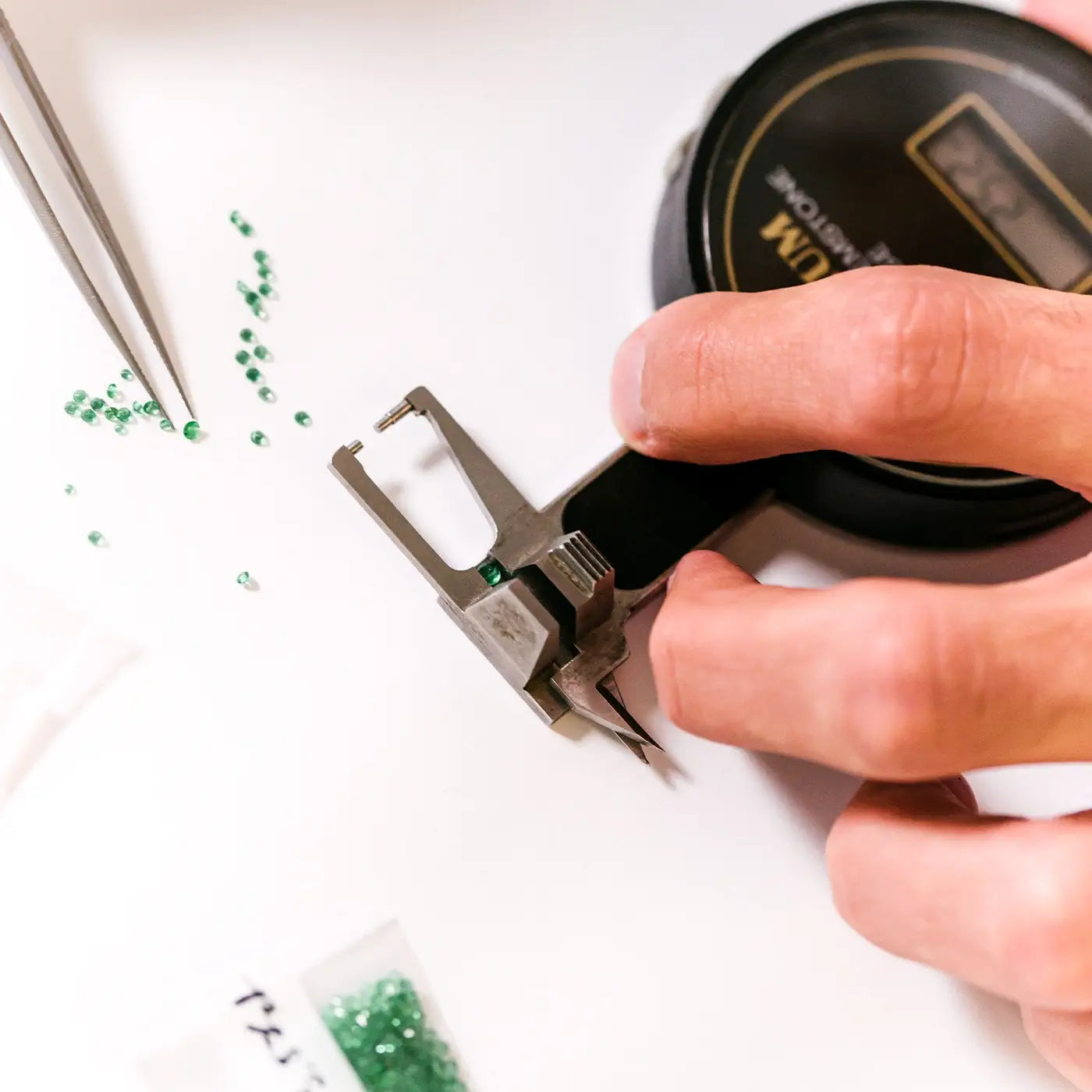UNDERSTANDING EMERALDS
Emeralds are valued for their deep green color and unique character. They are a popular choice in bracelet design, especially when consistency in color and clarity is well matched across the piece. Because each emerald is naturally different, understanding how they are evaluated will help you make an informed decision when selecting an emerald tennis bracelet.

The Key Factors in Evaluating Emeralds
Emeralds are assessed based on four main quality factors: Color, Clarity, Cut, and Carat Weight — with color being the most important.

Color
Color is the primary factor in determining an emerald’s value. The most desirable emeralds show a rich, vivid green with good saturation and minimal undertones.
Emerald color is typically described by three qualities:
- Hue: The basic color. Pure green is most valuable, often with a slight blue undertone.
- Tone: Refers to how light or dark the color appears. Medium to medium-dark tones are preferred.
- Saturation: The intensity of the color. Higher saturation means a more vibrant, impactful stone.
For bracelets, it’s essential that the emeralds are closely matched in color for a consistent and harmonious appearance.

Clarity
Unlike most other gemstones, emeralds almost always have visible inclusions. These internal features are so common in emeralds that they are sometimes referred to as the stone’s “garden” or jardin.
- Minor inclusions are expected and accepted in emeralds.
- Eye-clean emeralds (with no visible inclusions) are very rare and highly valuable.
- Inclusions that are too dense or surface-reaching can reduce the stone’s durability and brilliance.
In bracelets, look for emeralds that are transparent and evenly matched, with no inclusions that disrupt the overall appearance or threaten the stone’s structure.

Cut
Emeralds are relatively soft compared to diamonds and sapphires, making precise cutting essential. A good cut enhances the stone’s color and minimizes the impact of inclusions.
- Emerald cut is the most traditional shape — rectangular with stepped facets that emphasize clarity and color.
- Other shapes like oval, cushion, and round are also used, depending on the design of the bracelet.
For bracelets, well-cut stones should be symmetrical, matched in shape and size, and set securely to protect the gem.
Carat Weight
Emeralds have lower density than diamonds and rubies, so they appear larger than other gemstones of the same carat weight.
- Total carat weight (ctw) refers to the combined weight of all emeralds in the bracelet.
- Larger individual emeralds are rare and significantly more expensive.
In bracelets, smaller stones that are well-matched in size and color create a balanced and elegant look.
Origin
The origin of an emerald can significantly influence its value. Certain sources are known for producing stones with superior color and clarity:
- Colombia: Produces some of the world’s finest emeralds, known for deep green color and excellent transparency.
- Zambia: Known for high-quality emeralds with a slightly cooler tone and strong clarity.
- Brazil: Produces a range of emerald qualities, often with a lighter green color.
Origin can sometimes be determined through laboratory analysis and may be included on a certificate for valuable stones.
Certification
Due to the cost of certification and the number of stones involved, emerald bracelets are usually not certified unless they feature larger or high-value stones.
For important pieces, certification from reputable labs such as:
- GIA (Gemological Institute of America)
- Gübelin
- SSEF
- GRS
can confirm treatment levels, origin, and whether the stone is natural.

Final Thoughts
When choosing an emerald bracelet, focus on color, clarity, cut quality, and how well the stones are matched across the piece. Always ask about treatments, and for high-value items, inquire about certification and origin.
Understanding these factors will help you choose a bracelet that is beautiful, well-crafted, and lasting in value.